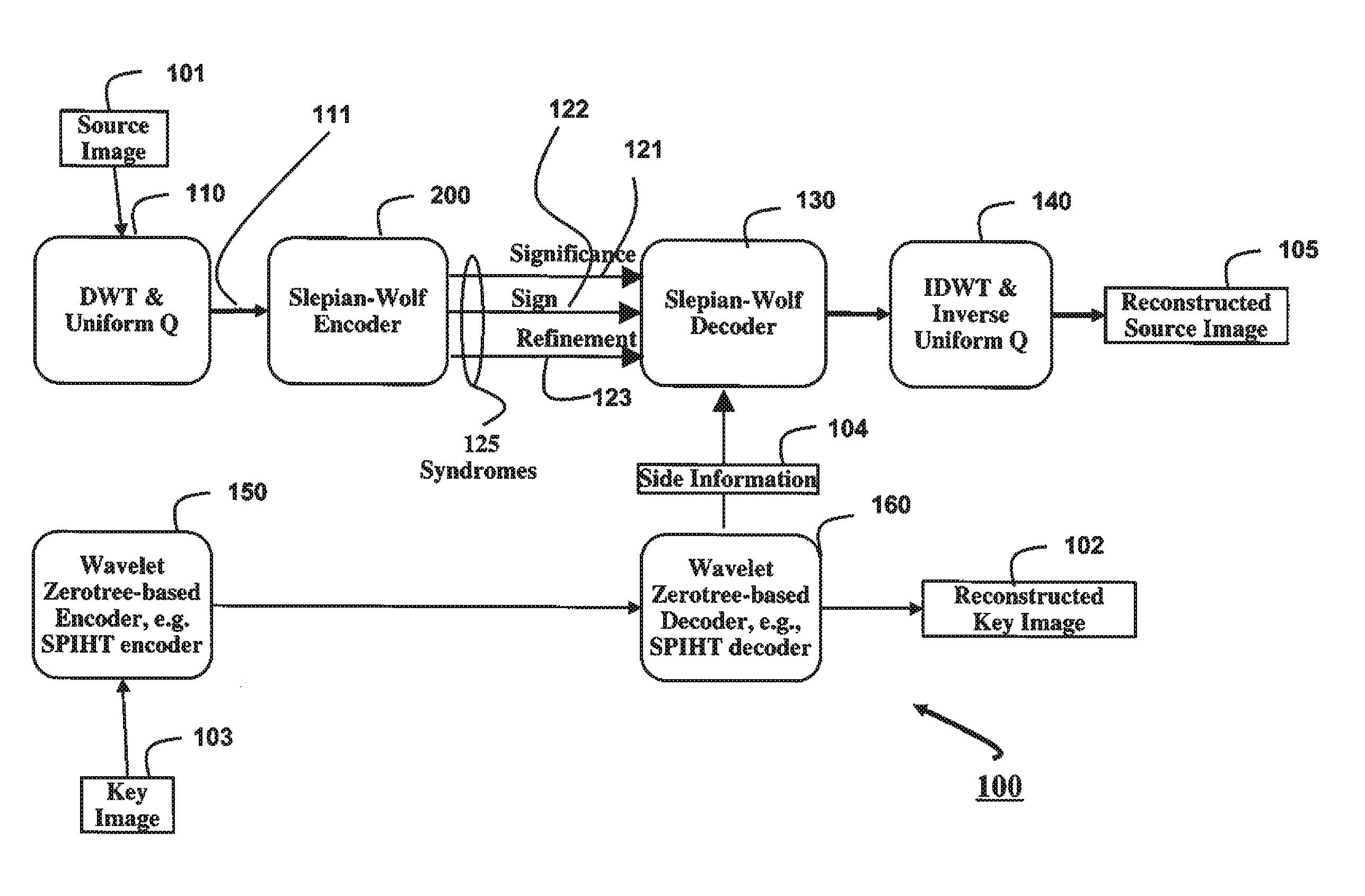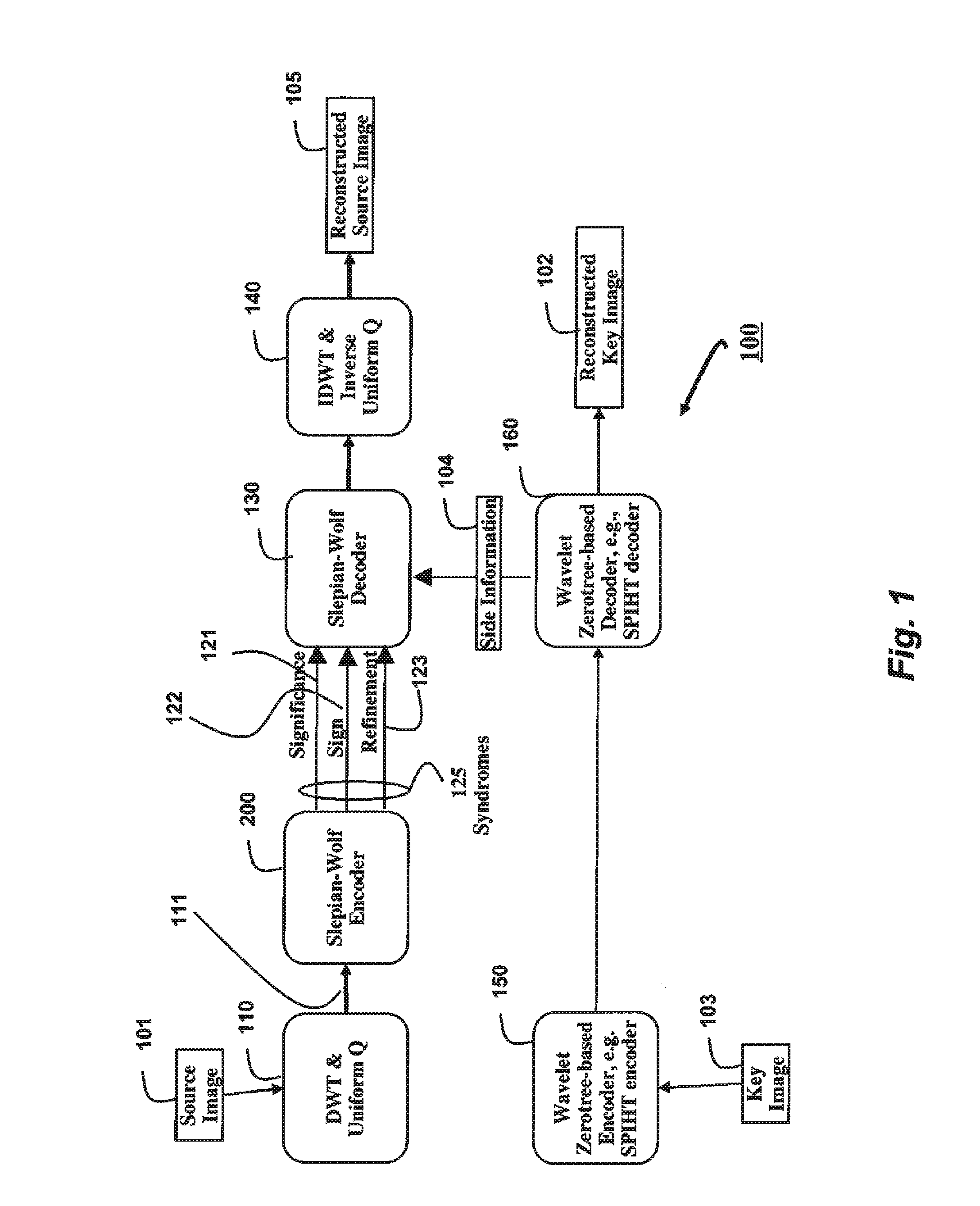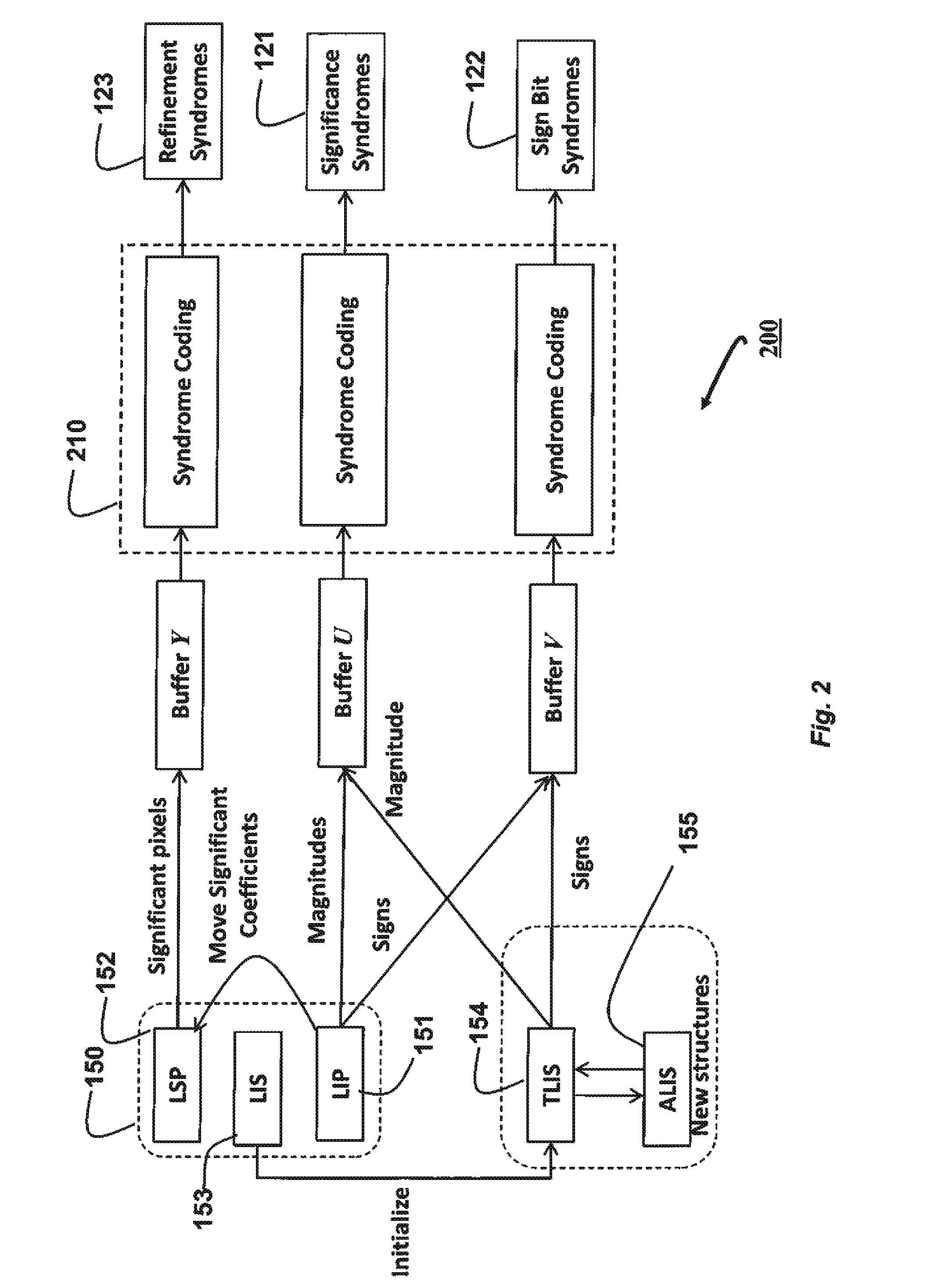Method for distributed source coding of wavelet coefficients in zerotrees
a distributed source and zero-tree technology, applied in the field can solve the problems of distributed source coding at a disadvantage with respect to advanced wavelet-based compression algorithms, and the sparsity structure of wavelet decomposition cannot be fully exploited
- Summary
- Abstract
- Description
- Claims
- Application Information
AI Technical Summary
Benefits of technology
Problems solved by technology
Method used
Image
Examples
Embodiment Construction
[0013]Distributed Coding of Wavelet Zerotrees
[0014]FIG. 1 shows a method for a wavelet-domain distributed source coding (DSC) according to embodiments of our invention. The method can be implemented using a processor 100. A discrete wavelet transform (DWT) encodes both frequency and location information. We use an asymmetric DSC in which a source is independently encoded and conditionally decoded in the presence of some correlated side information available only at the decoder. In some embodiments, a source 101 and side information 102 are 2-D images of equal size. We apply 110 a discrete wavelet transform with uniform quantization (Q) to the source image. An identical number of levels of wavelet decomposition are used for the source image and the side information images. The quantized wavelet coefficients 111 are input to a Slepian-Wolf encoder 200.
[0015]Side Information
[0016]The side information, which can be a previous image in a video sequence, or one channels in a multispectral...
PUM
 Login to View More
Login to View More Abstract
Description
Claims
Application Information
 Login to View More
Login to View More - R&D
- Intellectual Property
- Life Sciences
- Materials
- Tech Scout
- Unparalleled Data Quality
- Higher Quality Content
- 60% Fewer Hallucinations
Browse by: Latest US Patents, China's latest patents, Technical Efficacy Thesaurus, Application Domain, Technology Topic, Popular Technical Reports.
© 2025 PatSnap. All rights reserved.Legal|Privacy policy|Modern Slavery Act Transparency Statement|Sitemap|About US| Contact US: help@patsnap.com



